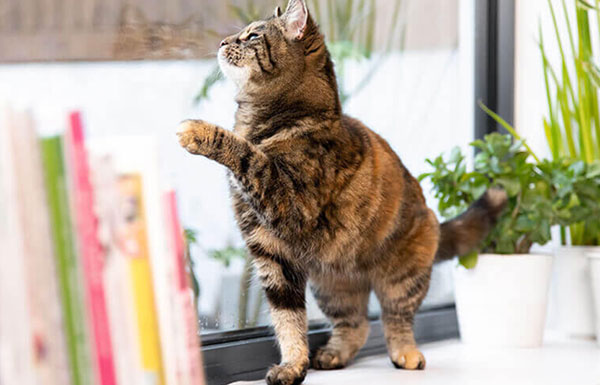In feline health, strokes, though rare, indicate possible worries for beloved cats. Explore the signs of stroke in cats, an important guide for cat owners concerned about their feline friends’ health. Unlike humans, cats experience strokes less frequently. However, they demand rapid attention when they occur.
Strokes can affect cats regardless of age or breed, yet the exact cause often remains unknown. Hidden medical conditions, such as heart disease, high blood pressure, or a head injury, raise the risk, akin to solving a cat’s health puzzle where every piece matters.
Strokes in cats, caused by reduced blood flow, show signs like changes in behavior and unsteady movements. Their sudden onset sets them apart, requiring quick attention. Understand cat health, check vital signs, and act promptly. Can cats have strokes? It adds complexity to their health puzzle.
Causes of Strokes in Cats
While strokes are commonly linked to older individuals, a study unveils that cats showing symptoms are typically around nine years old. Several unseen health issues heighten a cat’s risk, such as:
- Heart disease
- High blood pressure
- Hyperthyroidism
- Kidney disease
- Conditions promoting blood clotting
- Moving parasites
- Trauma
- Infections
- Liver disease
These factors add a layer of complexity to cat health, highlighting the diverse signs of stroke in cats.
Vet Diagnosing Signs of Stroke in Cats
Diagnosing cat stroke symptoms involves a comprehensive vet examination, including a physical and neurologic examination. Testing involves blood pressure readings, routine blood work, and analyzing fluid in the brain and spine.
In suspected cases, a veterinary neurologist may use advanced imaging like MRI or CT scans to confirm the presence of a stroke.
Treating Strokes in Cats
Treating strokes in cats involves primarily treating based on symptoms and supportive measures. Oxygen therapy enhances oxygen delivery to damaged brain tissue, while seizure medications control seizures. Additionally, managing underlying conditions is crucial.
Maintaining hydration, providing adequate nutrition, and addressing neurologic deficiencies through physical therapy are integral steps. However, deciding on treatment for a cat who can’t walk suddenly can be challenging.
Recovery is possible, especially in cats with milder symptoms. The recovery journey varies, with some cats fully recovered and others facing lasting effects. The future outlook after a stroke in cats is doubtful. Nevertheless, personalized treatment approaches offer hope for our feline friends.
Recovery from Strokes
Can cats recover from strokes? The recovery after a cat’s stroke is uncertain. Some fully recovery, especially if symptoms are mild, and the cat was previously healthy. Severe feline stroke symptoms or underlying health conditions may result in a partial recovery with lasting neurological problems.
Cat owners need to understand that a cat stroke, in some cases, can lead to unfortunate outcomes, including cat stroke death. The recovery timeline varies, spotlighting the need for ongoing support and care as cats navigate their post-stroke journey.
Furthermore, this journey may include addressing physical and emotional aspects. It stresses the importance of attention and care during this challenging period.
Preventing Strokes in Cat
Maintain a Healthy Weight
Keeping your cat at a healthy weight is crucial. Being overweight raises the risk of health issues like heart disease and high blood pressure, increasing the chances of strokes. Offer a balanced diet and playtime to keep your cat fit and active.
Regular Veterinary Check-ups
Regular vet visits are vital for preventing strokes. Vets can spot underlying conditions such as heart disease or high blood pressure early, allowing for timely management to lower the risk of strokes. These check-ups also allow for discussing concerns or changes in your cat’s behavior or health.
Create a Low-Stress Environment
Ensure your home is stress-free for your cat. Provide hiding spots, climbing areas, and quiet spaces where they can retreat. Interactive toys and puzzle feeders keep them mentally stimulated and engaged, promoting overall well-being.
Ensure Home Safety
Make your home safe to prevent accidents. Remove hazards like toxic plants and sharp objects, and secure windows and balconies to prevent falls. Keep your cat indoors to avoid outdoor dangers such as traffic and predators.
Implementing these steps can significantly reduce the risk of strokes in cats. Regular vet visits, a balanced diet, a stress-free home, and safety measures are essential for maintaining your feline friend’s health and well-being.
Conclusion
In feline care, noticing the major signs of stroke in cats, including symptoms of brain hemorrhage, is crucial for pet owners. Despite being rare, strokes can affect cats of any age or breed, highlighting the importance of understanding risk factors like heart disease.
Furthermore, the diagnosis involves a harmony between a vet’s keen examination and advanced testing, like MRI or CT scans, solving the mystery of feline strokes.
However, the recovery journey varies, with some cats fully recovering and others facing lasting effects. As we navigate, ongoing support becomes vital, offering a comforting beacon for our feline companions on their post-stroke journey. Learn how to tell if your cat had a stroke for better understanding and care.
